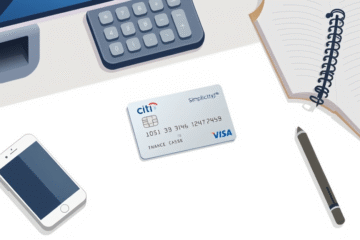Refinancing Credit to Eliminate Debt Hassles
Credit Refinancing is a valuable financial strategy that can help individuals take control of their debts by securing new loans or credit cards with lower interest rates.
This article will delve into the numerous benefits of refinancing, guide you in selecting the right loan, and provide comparisons of interest rates to optimize savings.
Additionally, we will outline steps to effectively transfer your balances, simplify your financial obligations, and identify common pitfalls to avoid during the refinancing process.
With strategic planning, you can pave the way for long-term debt reduction and financial freedom.
Understanding Refinancing as a Debt Solution
Refinancing serves as a strategic approach for individuals dealing with high-interest credit card debt and recurring overdraft charges.
By replacing these costly balances with a loan or line of credit that carries more favorable terms, borrowers gain better control over their financial obligations.
Common refinancing tools include personal loans or balance transfer credit cards offering promotional low interest rates, which enable a simpler and less costly path to payoff
This method becomes even more valuable when you’re struggling to keep up with minimum payments or juggling multiple debts.
As noted by financial experts at Chase Bank, refinancing essentially gives debt a makeover, often resulting in smaller monthly payments and reduced overall interest expense
- Lower interest costs
- Streamlined monthly payments
- Accelerated debt payoff timeline
Key Decision Factors Before Applying
Evaluating the interest rate is essential before selecting a refinancing loan, especially when aiming to pay down high-interest credit card or overdraft debt.
A lower APR means less accumulation of interest over time, which significantly lowers the repayment amount.
You should compare rates across offers and consider products such as Bank of America’s mortgage refinance options that offer competitive rates.
Reviewing loan term options helps you balance monthly payments with long-term cost.
Shorter terms typically come with higher payments but lower total interest, while longer terms reduce monthly strain at the expense of more interest over time, so aligning the term with your budget and payoff goals is key to financial efficiency.
Another critical factor is the debt-to-income (DTI) ratio, which indicates your ability to manage repayment.
Most lenders prefer a DTI below 43%.
You can learn more through this overview from LendingTree’s mortgage refinance criteria.
Your credit score also deeply influences your loan approval and interest rate.
A higher score can unlock better terms.
According to Rocket Mortgage, most lenders require a minimum of 620 for a conventional refinance, so improving your score beforehand can be financially strategic.
Understanding fees and closing costs is another important element.
Some refinancing loans come with upfront expenses like origination fees and appraisals.
While these might seem minor, they could offset potential savings if too high, and therefore require a careful calculation of the break-even point.
- Interest Rate
- Loan Term
- Debt-to-Income Ratio
- Credit Score
- Fees and Closing Costs
Comparing Rates and Costs Effectively
Effectively comparing refinancing rates and associated fees empowers you to save significantly over time.
While many focus only on the interest rate, fees can greatly affect total repayment.
For example, choosing a slightly higher rate with lower fees may actually reduce your total cost.
Platforms like Bankrate’s refinance rates tool make it easy to visualize the differences.
Consider the following simple breakdown:
| Lender | APR | Fees | Total Cost |
|---|---|---|---|
| A | 9.9% | $200 | $10,450 |
While 9.9% might seem high at a glance, the low fees help keep the total cost manageable.
On the other hand, a lender offering a slightly lower rate could surprise you with higher fees, eroding your potential savings.
Understanding and comparing total costs side-by-side is essential to selecting the most cost-effective refinancing deal.
Transferring and Consolidating Balances
1. Start by reviewing all your credit card and overdraft balances, noting the interest rates and minimum payments for each.
This helps you determine how much to refinance and identify the most urgent debts to address first.
2. Research loan options that offer lower interest rates than your current credit cards.
Consider lenders that specialize in debt consolidation or refinancing, such as those offering debt refinancing programs.
3. Once you prequalify, submit your loan application with accurate financial information.
Be honest about all your existing debt, as most lenders will review your credit report before approval.
4. After loan approval, request a direct payment to creditors if allowed.
Many lenders offer to pay your credit cards and overdrafts directly, ensuring a smoother transition.
5. Once balances are cleared, confirm all accounts reflect a $0 balance.
Set up a repayment plan for the new refinancing loan, focusing on timely payments to avoid new interest accruals and protect your credit score.
Common Pitfalls to Avoid
Refinancing credit card and overdraft debt can be a powerful financial strategy, but common mistakes can quickly undo the potential benefits.
One of the biggest errors borrowers make is treating the new credit as an invitation to spend more.
After consolidating high-interest debt, continuing to use the old credit cards without a sound repayment plan leads to even greater financial strain.
As noted by the Christian Science Monitor, avoiding new purchases while repaying transferred balances is essential to stay out of the debt cycle.
Another overlooked danger is neglecting to compare all available refinancing options.
Some borrowers jump into the first personal loan or balance transfer offer they receive without measuring fees, APRs, and repayment flexibility.
Resources like MidFlorida’s debt consolidation guide emphasize the importance of shopping around for competitive terms.
Missing out on better options due to haste or lack of knowledge could be a costly mistake.
Many also forget to address credit habits, using refinancing as a patch rather than a solution.
Habitual overspending or relying on overdrafts demands deeper behavioral change.
Without this, even a well-structured refinance plan crumbles under repeated misuse.
On platforms like Reddit’s debt forums, users often highlight how relapsing into old habits post-refinancing leads to worse financial outcomes.
Lastly, borrowers often fail to account for how refinancing impacts credit scores.
Clearview Financial reveals that multiple hard inquiries and resetting account age can temporarily lower your credit.
Planning timing carefully and avoiding frequent loan applications can minimize this impact.
Being strategic and informed helps protect your financial foundation while navigating the refinancing process
Staying Debt-Free After Refinancing
After refinancing, adopting healthy financial habits becomes essential to avoid sliding back into debt.
Start by maintaining a consistent budget that reflects your current obligations and spending limits.
Use digital budgeting tools or spreadsheets to track income, expenses, and savings goals.
Keeping your budget up to date helps prevent unnecessary spending and allows you to adjust quickly if your financial situation changes.
Pair this habit with an emergency savings fund, which acts as a cushion for unexpected expenses like medical bills or urgent repairs.
Without it, you risk falling back on credit cards or overdrafts, undoing the progress you’ve made through refinancing.
As highlighted by Valex FCU’s debt strategies, proactive planning plays a key role in effective debt management.
In addition, consistently monitor your credit.
Services like free credit monitoring apps can alert you to changes in your report and help you identify any errors or suspicious activity.
Staying aware of your credit activity not only protects you against fraud but also motivates responsible financial behavior.
Aim to use only a small portion of your available credit, which keeps your credit utilization low and supports a stronger score.
Over time, combining this with disciplined payments boosts your creditworthiness.
Keeping these habits alive post-refinancing is your key to financial stability and long-term freedom from revolving debt.
Credit Refinancing offers a path to reduce your financial burden and improve your overall financial health.
By understanding the process and making informed decisions, you can successfully manage your debts and work towards a more stable financial future.



0 Comments